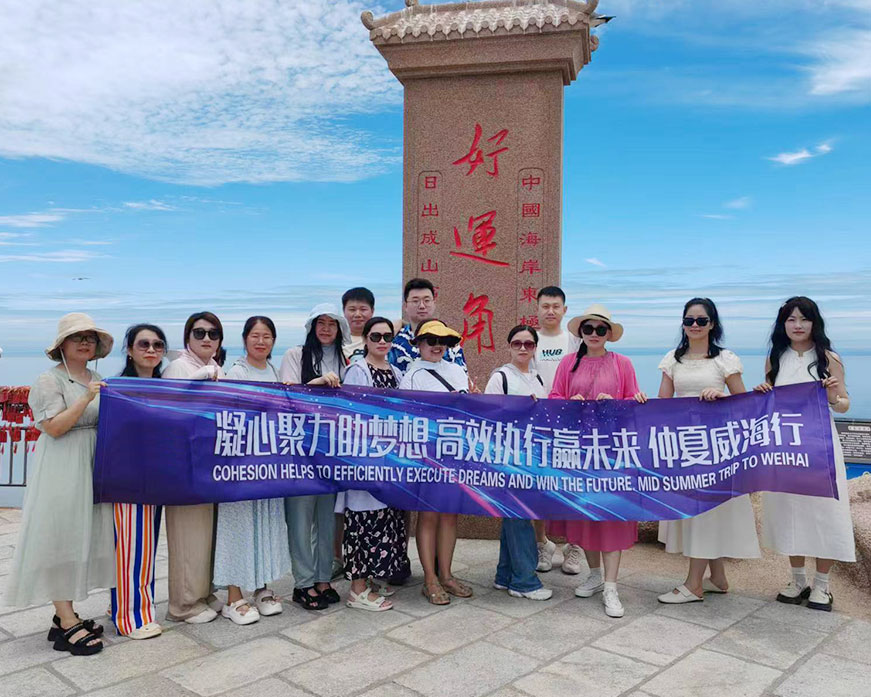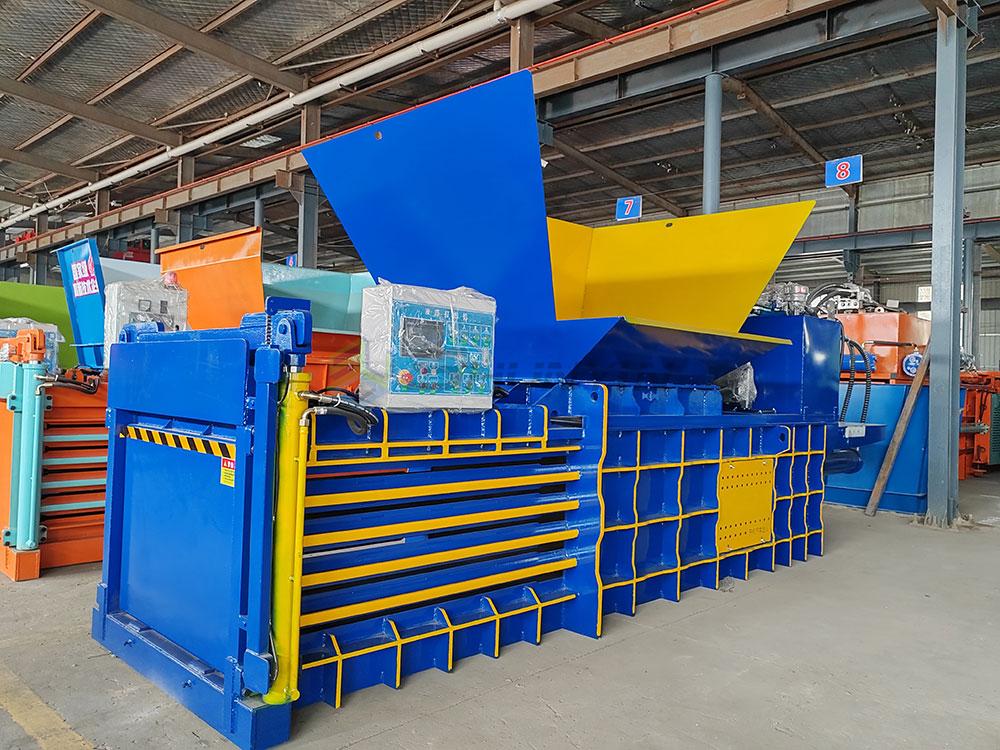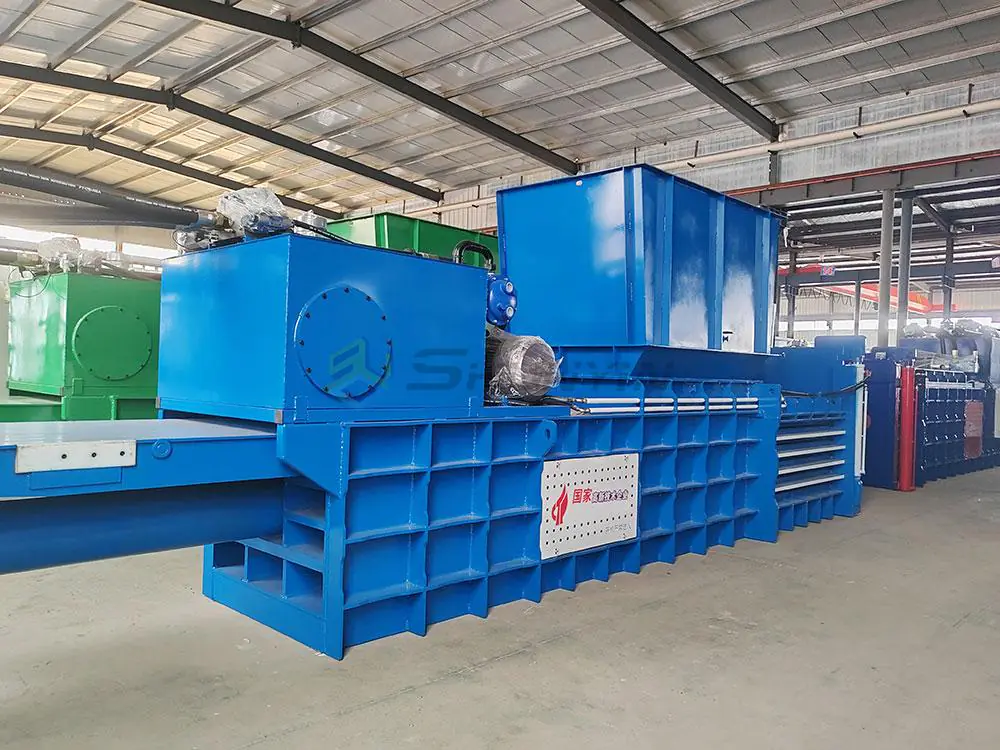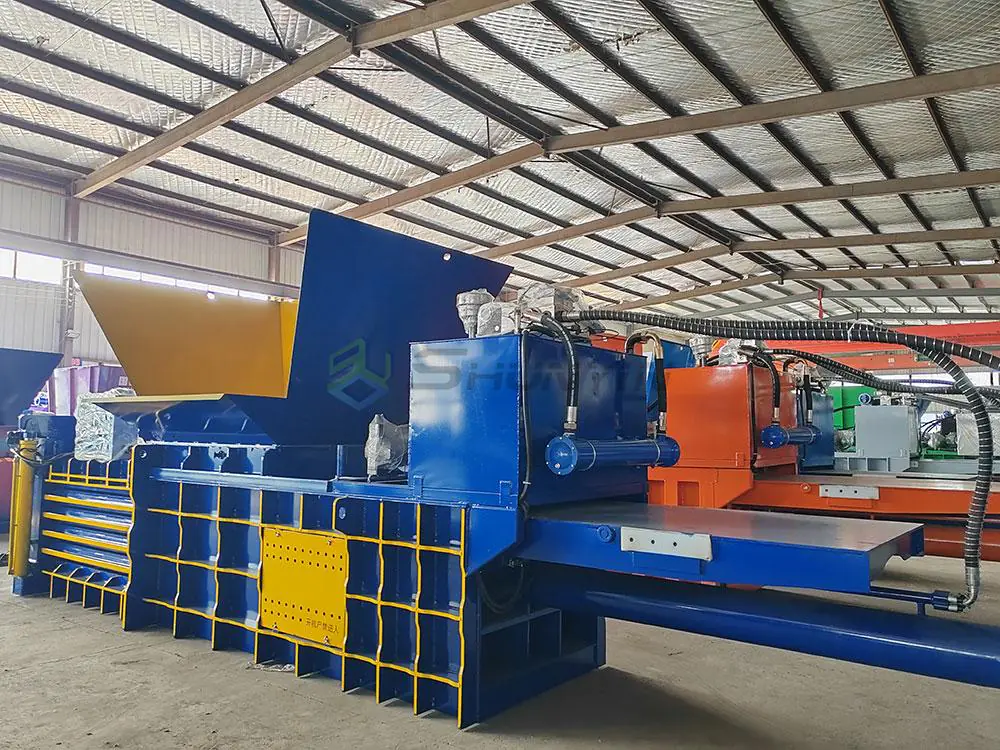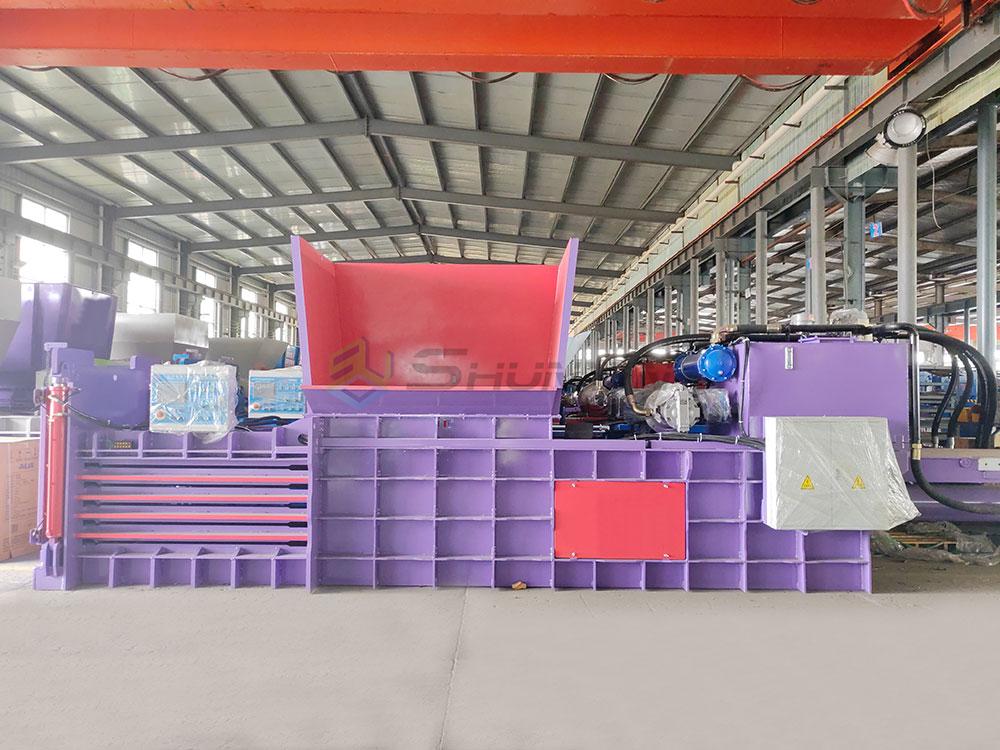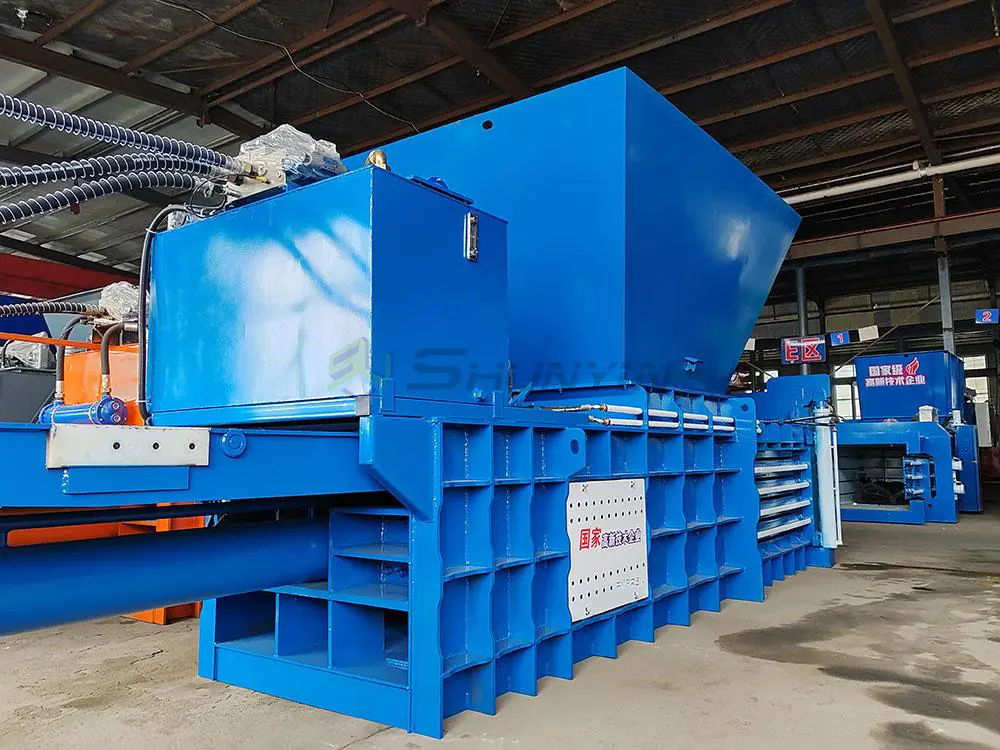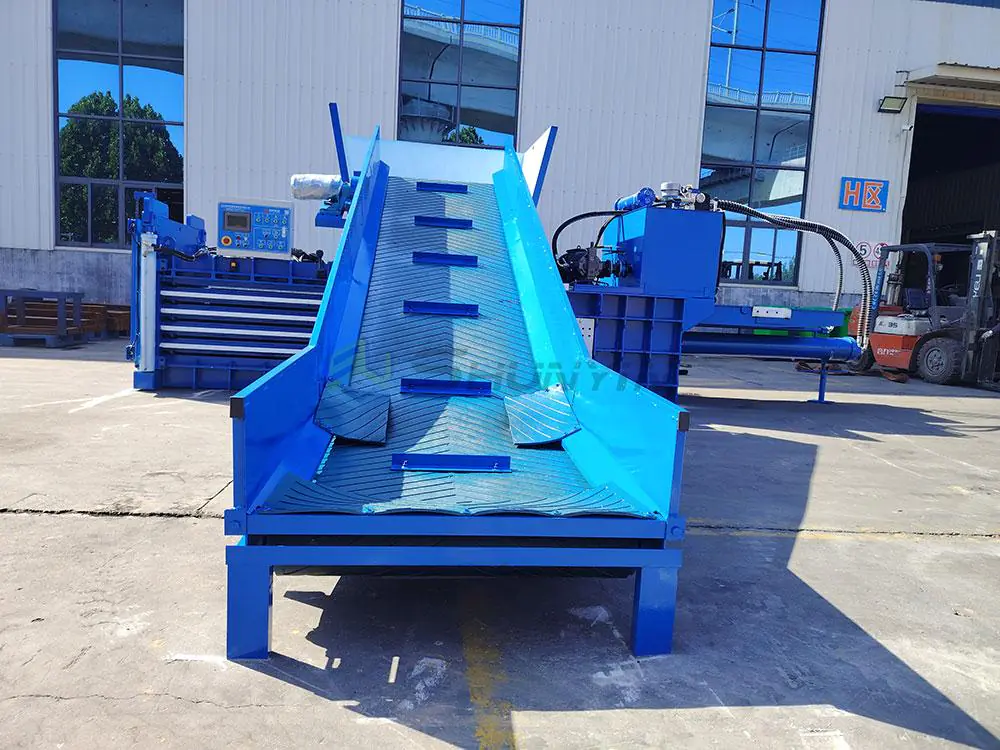Mountains of flimsy film waste? Storage eating your budget? Our clients slash handling costs 60% using specialized compaction systems.
Recycling balers compress plastic film and bags into dense transport-ready blocks, transforming bulky waste into valuable commodities – achieving 18:1 volume reduction while enabling material certification and premium resale prices globally.

Boost warehouse space for his Canadian operation after implementing our solution. Discover how these systems unlock maximum value.
What Makes Modern Balers Essential for Recycling Streams?
Frustrated with hand-tying waste? Japanese facilities eliminated labor costs with automated compression systems1.
A baler is a hydraulic machine that vertically or horizontally compacts recyclables into standardized bales using controlled pressure cycles – creating transport-efficient blocks that maximize storage and meet mill specifications for profitable resale.

Transformative Economics Explained
Singapore processors increased revenue 35% through optimized baling.
Key Financial Impact
| Baling Factor | Before Baling | After Baling | Improvement |
|---|---|---|---|
| Transport Costs | $85/hour | $30/hour | 65% savings |
| Storage Space | 1000m² | 150m² | 85% reduction |
| Resale Value | $50/ton | $240/ton | 380% increase |
| Labor Requirements | 8 workers | 2 workers | 75% reduction |
Lambert redirected savings into sales growth. Calculate your ROI
Three Operational Advancements
- Auto-cycling: Programmable PLC systems
- Sensor-based optimization: Real-time density control
- Modular adaptability: Handle film to rigid plastic
Our SY-Smart series includes all upgrades. Explore models
Why Are Plastic-Specific Balers Changing Film Recovery?
Losing valuable LDPE to contamination? North American recyclers increased purity to 97% with dedicated systems.
Plastic balers feature enhanced material handling for flexible polymers – incorporating anti-tangle pre-compressors, heated platens and auto-strapping to transform lightweight film/bags into 800kg export-ready bales meeting international recycling standards.

Specialist Design Features
Canadian operations reduced downtime 80% after switching equipment.
Component Innovation Comparisons
| Feature | Standard Baler | Plastic Baler | Advantage |
|---|---|---|---|
| Feeder System | Open hopper | Auger pre-feed | Prevents tangling |
| Compression Plates | Flat surface | Micro-grooved | Air elimination |
| Ejection System | Manual | Air-assisted | Light bale handling |
| Force Control | Fixed | Zone-regulated | Optimal film density |
Lambert avoided costly jams entirely. Download spec sheet
Four Critical Plastic Features
- Pre-breakers: Reduce bag volume pre-load
- Contamination sensors: Detect foreign materials
- Fog lubrication: Prevent static cling
- Low-temperature sealing: Maintain polymer integrity
Our SY-Film series handles all film grades. Test your materials
How Do Balers Create Value from Waste Streams?
Stuck paying disposal fees? Tokyo corporations turned landfill-bound film into profit centers.
Balers generate profit by volume-reducing waste into certified recyclables – slashing transportation/storage costs while producing commodity bales accepted by global processors for remanufacturing, creating circular revenue streams.

Waste-to-Revenue Conversion
Singapore recyclers achieved 98% landfill diversion rates.
Material Value Transformation
| Input Material | Loose Value | Baled Value | Value Drivers |
|---|---|---|---|
| LDPE Pallet Wrap | $40/ton | $310/ton | Reduced moisture |
| Retail Carry Bags | $30/ton | $290/ton | Certification |
| Agricultural Film | $15/ton | $190/ton | Contamination controls |
| Reinforced FIBC | N/A | $110/ton | Special sorting |
Japanese recycling contracts. Access buyer list
Profit Optimization Steps
- Size sorting: Separate film by thickness
- Moisture management: <8% water content
- Bale certification: International standards compliance
- Transport optimization: Maximize container loads
Our systems include moisture sensors. Request case study
Which Films Become Premium Recyclable Commodities?
Confused about polymer compatibility2? North American processors reduced rejection rates 90% with identification workflows.
LDPE (#4), HDPE (#2) and clean PP films remain fully recyclable when baled separately, while multilayer composites, PVC-coated films and biodegradables require specialized handling – proper sorting creates certified mono-polymer bales commanding $120-350/ton premiums.

Classification Mastery
Japanese plants increased sorting accuracy to 99% through training.
Recyclability Matrix
| Film Type | Recyclable | Processing Requirements | Export Value Range |
|---|---|---|---|
| Clear LDPE | Yes | Low contamination | $220-350/ton |
| Colored HDPE | Yes | Color separation | $180-310/ton |
| Reinforced FIBC | Limited | Remove rope liners | $100-140/ton |
| Metallized Film | No | Incineration recovery | $0 |
| Biodegradable | Contaminant | Segregation needed | N/A |
avoided costly shipment rejections. Get contamination guide
Processing Protocols
- Label detection: Remove adhesive residues
- UV inspection: Identify hidden PVC layers
- Surface testing: Check print ink permeability
- Tensile verification: Test fiber reinforcement
Our SY-Sort system includes spectroscopy. Schedule demo
Conclusion
Specialized plastic film balers transform waste management through contaminant-resistant designs that create high-value certified bales, turning disposal costs into profits while maintaining polymer integrity.

